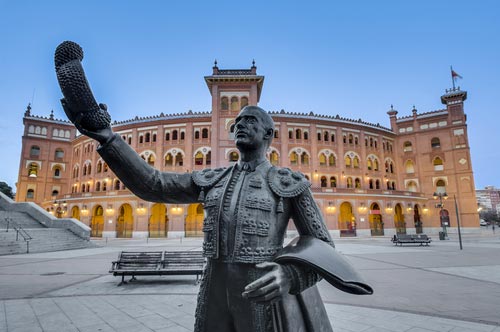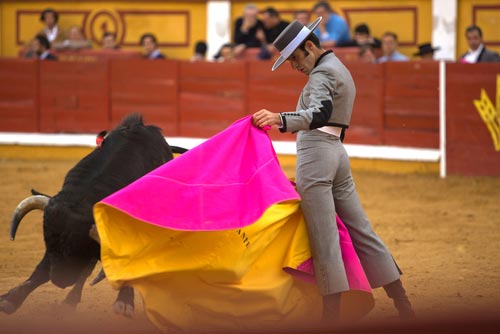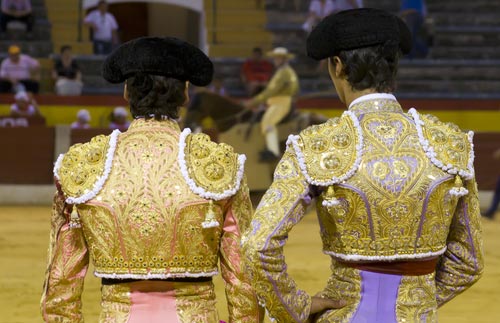Bullfighting or tauromachy is a traditional show in Spain. It is also practice in Portugal, southern France and Latin America. Some think is a cruelty and some is a sport. Controversies aside, it is an old European practice that already take place in the ancient Greece. It is very complex show hide interesting secrets behind.

Bullfighting and Mythology
Bullfighting began as a worship and sacrifice in Mesopotamia. Even though, there are epic poems regarding this tradition, as the legendary fight between Gilgamesh and the Bill of Heaven. All this stories always talk about legendary men fighting and beating a bull. There also several mosaics, painting pottery and old frescos talking about the mystic fight against a beast incarnated in a bull figure.
Bull leaping was a common practice in Crete, the land of the Minotaur legend. Bull wrestling is also a well-known practice in ancient Rome, and also in the Balkans and Turkey. Fighting a bull is a demonstration of human power and that is why it turn into a tradition in Mediterranean Europe. There has been many famous figures that become bullfighting fans like Ernest Hemingway, Ava Gardner, Che Guevara, Pablo Picasso, Greta Garbo and Charlton Heston.

Toreros and suits
There an entire culture behind bullfighting. The aesthetic of bullfighting is very complicated beginning with the creation of the matador dresses, called “traje de luces”. It means “suit of light” a very adequate name for a suit completely embroidered with sequins and reflective threads of gold or silver. Just one of this suits takes months to be sew up and embroider manually. They are really expensive.
Getting dress is also part of the ceremony. Toreros are helped by a squire to get dress, regarding a superstitious ritual. This tradition also may respond to the difficulty of getting dress with a extremely tight suit full of decorations.
Besides the suit, toreros wear a hat called montera. It is wear only in the presentation moments called “paseillo”. After it the torero can offer the hat to a lady or to a famous assistant in the bull ring to honor them.

In the eighteen century toreros wore long hair usually tight in a bun coming out of the montera. Now a days toreros wore wigs just for the show. Cutting their hair was a symbol of retiring from the bullfighting. In fact, the expression “cutting the bun”, in Spanish “cortarse la coleta” means retiring from your labor or a practice.
Toreros aren’t the only ones on the show. There are picadors and rajoneadores, a part of a toreros crew each one with a special dress code of their own.
Bullfighting Dress Code
There is NOT a mandatory dress code to assist to a bullfight. Anyway, assisting to a bullfight is consider an honor. It is like going to an important ceremony. People go dress up accordingly; men wear suits and women nice short dress. You should not forget to bring a handkerchief in order to participate in the ritual of awarding the torero. Besides, all these what you need to do the most is buying Madrid bullfighting tickets, here.